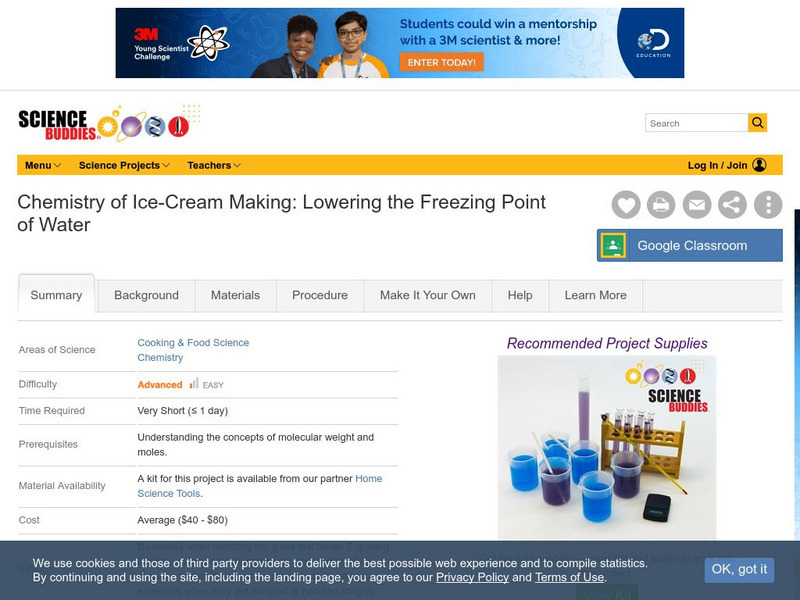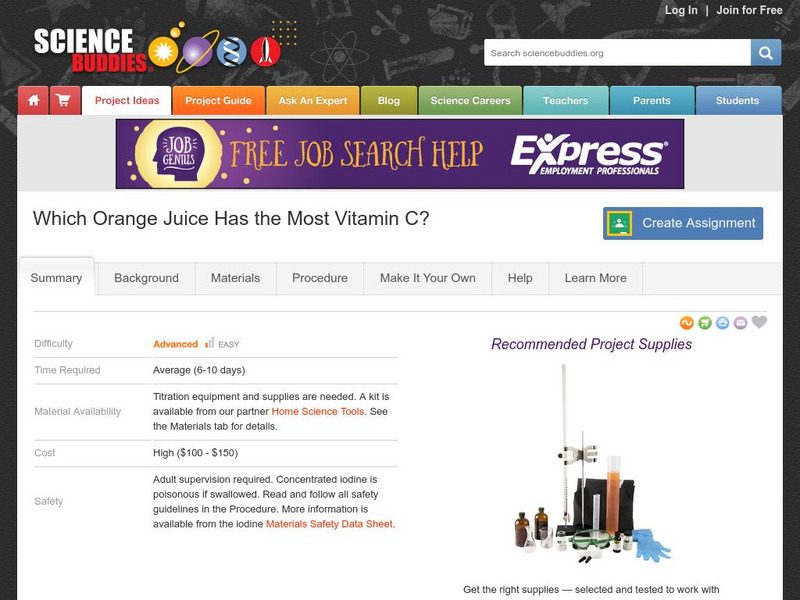Science Buddies
Science Buddies: The Science of Making Cheese!
Oooey gooey cheese - yum. Who doesn't like a slice of warm pizza straight from the oven? There's nothing quite like a slice of pizza and a glass of milk, so what makes pizza so great? The cheese. But did you know that making cheese is...
Royal Society of Chemistry
Royal Society of Chemistry: Kitchen Chemistry: Use of Salt in Cooking (1) [Pdf]
Instructions for experiments to see whether cooking green beans in salted water improves their taste, texture, or color.
Maryland Science Center
Maryland Science Center: Caramel Chemistry [Pdf]
This activity demonstrates the Maillard Reaction, which explains how browning and flavor develop when something is cooked.
Science Buddies
Science Buddies: How Much Baking Powder Do Quick Breads Need?
If you like to bake, this could be a good project for you. There is a purpose for each of the ingredients in your recipes, but not everyone is always aware of what that purpose may be. Though this lab takes multiple days, you will...
Science Buddies
Science Buddies: Lowering the Freezing Point of Water
When it comes to making ice cream, in order to make the mixture cold enough to freeze, you surround the container with ice and rock salt. This experiment helps you learn how the addition of salt (or other substances) affects the freezing...
Royal Society of Chemistry
Royal Soc. Of Chemistry: Kitchen Chemistry: Chemical Changes During Cooking [Pdf]
Article, with embedded questions, describes the chemical changes that take place when meat is cooked when sugar is heated, and when fruits brown.
Science Buddies
Science Buddies: Which Orange Juice Has the Most Vitamin C?
In this project you'll learn how to measure the amount of vitamin C in a solution using an iodine titration method. You will hypothesize which juice will contain the most vitamin C, and then compare the amount of vitamin C in three...
Exploratorium
Exploratorium: Bread Science
From Chinese baozi to Armenian lavash, bread comes in thousands of forms. Find out, on the most basic level, what chemistry ties them all together.
Science Buddies
Science Buddies: When Science Is Sweet: Growing Rock Candy Crystals
Though rock candy seems to be a simple enough treat, it is also pretty interesting to make. Crystallized sugar that can be grown from a sugar-water solution is just how rock candy is made. In this experiment, you will learn to make your...
Science Buddies
Science Buddies: Do Oranges Lose or Gain Vitamin C After Being Picked?
Are oranges highest in vitamin C when they are fresh from the tree (or, in a pinch, the grocery shelf)? In this project you'll learn how to measure the amount of vitamin C in a solution using an iodine titration method.



![Royal Society of Chemistry: Kitchen Chemistry: Use of Salt in Cooking (1) [Pdf] Handout Royal Society of Chemistry: Kitchen Chemistry: Use of Salt in Cooking (1) [Pdf] Handout](https://d15y2dacu3jp90.cloudfront.net/images/attachment_defaults/resource/large/FPO-knovation.png)





